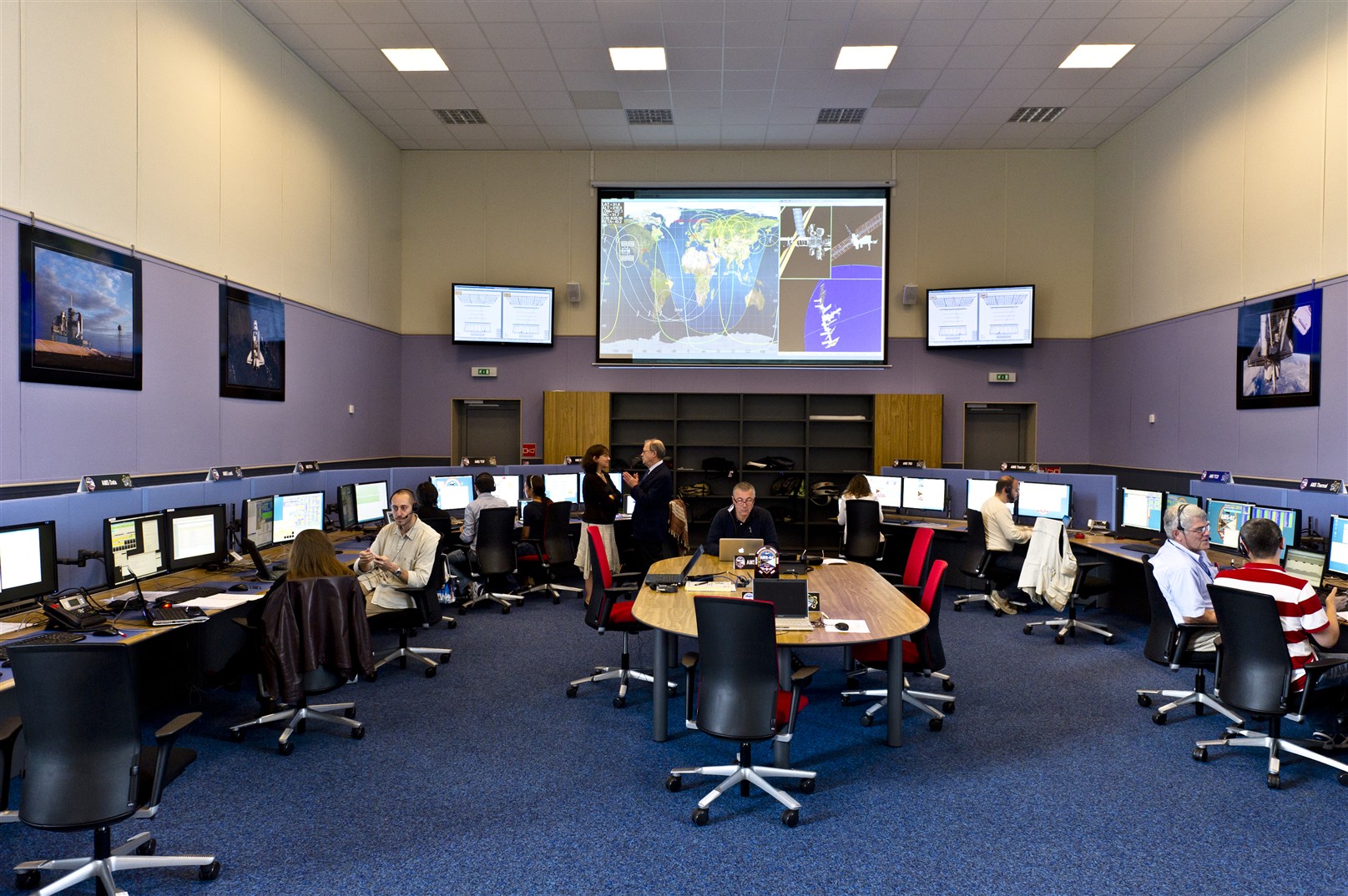AMS: From the ISS to CERN
The week of 16 May 2011 saw the successful launch and installation of the Alpha Magnetic Spectrometer aboard the International Space Station. Only 4 minutes after the installation had been completed, cosmic event data started to be recorded and began its long journey from low Earth orbit to the newly constructed Payload Operations and Control Centre located on CERN's Prévessin site.
Unlike the detectors around the LHC ring, the Alpha Magnetic Spectrometer (AMS) does not have the luxury of a physical connection to data-processing infrastructure. Instead, cosmic events and data on AMS itself must undergo a lengthy journey before they arrive at the Payload and Operations on the Control Centre (POCC - building 946 Prévessin site) of the AMS collaboration. A joint effort between NASA and CERN makes this transmission possible. “The Space Station first sends its data to a satellite at a very high orbit,” explains Sam Ting, AMS collaboration spokesperson. “The satellite sends its information to Edwards Air Force Base in California, from where it is then sent to the Marshal Space Centre in Alabama. From there, it is sent directly to CERN.”
In order to ensure that the data is not lost during this complex journey, it is stored on three separate occasions before it becomes available for analysis at CERN – onboard the ISS, at the Marshal Space Centre and upon arrival at CERN. As Ting explains, data-storing aboard the ISS is a necessary procedure because of the nature of the ISS orbit. “The Space Station orbits the Earth every 90 minutes and in some places there is no satellite coverage. We record the data on the ISS until a downlink can be re-established. The most important thing is not to lose the data.”
Communication between the POCC and the ISS is also very important. Each shift in the POCC includes a “Lead” – an AMS collaboration member who maintains live contact with NASA and the ISS. One significant issue that is constantly monitored and communicated by the Lead is the temperature of the AMS detector. “The only area where we can intervene is the fluctuation of temperature,” explains collaboration member, Mercedes Paniccia. “We have heaters on board the AMS that we control, but NASA has also agreed a procedure with the collaboration in case the temperature fluctuations exceed operational limits.” This procedure involves altering the orientation of the ISS. “The Lead waits for a band to speak directly to astronauts on the ISS,” explains Mercedes Paniccia. “However we need to wait until NASA gives us permission, because it is a restricted band.”
Thanks to extensive testing before the AMS was launched into space, there have been no big surprises, and after only three months the collaboration has nearly finished calibrating the detector. “Calibration is almost complete, but we still have to finalise the settings onboard before we start a physics run where clean results can be observed,” explains Paniccia. Although scientific data is monitored on a computer console in the POCC, reconstruction will be done using CERN’s computing power, without NASA’s participation. As Paniccia explains, “The analysis of the reconstruction data will be done by CERN, not by those working in the POCC.”
While physicists eagerly await AMS’ first physics run, events at energies never before seen on Earth have already started being recorded in the detector. “The Cosmos is a fantastic particle accelerator,” explains Roberto Battiston, Deputy AMS Spokesperson. “For the first time it is providing us with positrons and electrons detected in the several hundred TeV energy range, which is very high even compared to the LHC.” But although recording these high-energy events is very exciting, the collaboration is not in a rush to draw conclusions about dark energy, dark matter or new physics. “As I have told my collaborators, it has taken us many years to build this experiment,” says Ting. “It is a very precise detector that does not have any competition. We are going to do things very slowly. We don’t want to be the first to publish, we want to be the last to publish. The most important thing is to not make any mistakes – no one is able to verify our results. We have to be very careful.”
The experiment is scheduled to run for the remainder of the ISS’s lifetime, now that NASA has closed its shuttle programme.
| Visit the POCC! Following the success of the recent visits to Infinity, CERN's Internal Communication service is organizing a visit to the AMS’ POCC (building 946 in Prévessin site). If you wish to participate, you can sign up for a visit by sending us an email (dates to be decided depending on the number of people interested in visiting). Note that visits are open only to CERN access-card holders. The visit will include: - an introduction by the experts, lasting about 15 minutes, |
by Jordan Juras


